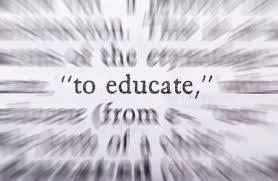The Culture Combination: 5 People and Positions You Must Get Right to Build a Winning High Performance Culture in Your Sporting Organisation

There is no one thing that you can do which will guarantee success: no single change which, in isolation will create and sustain a winning culture in high performance sport.
There are however a combination of things that you can do to increase the likelihood of success: “The Culture Combination”: 5 People and Positions You Must Get Right to Build a Winning High Performance Culture in Your Sporting Organisation.
People. People. People.
Achieving peak performance in high performance sporting organisations and professional teams is about three things:
- People;
- People;
- People.
Sure…money, programs, structures, systems, facilities, innovation etc etc are all important but the critical factor is now, always has been and always will be – people.
Get the people factor right and everything else is possible.
Get it wrong and all the money, facilities, equipment, gimmicks, gizmos and gadgets will not deliver to you the success you seek: it’s about people.
More than that: its about the right peoplein the right positions driving the right programs at the right time. But it all starts with the right people.
The “Big Five” – the Culture Drivers.
So what are the 5 People and Positions You Must Get Right to Build a Winning High Performance Culture in Your Sporting Organisation?
They are:
- The Political Leader; Chairman of the Board.
- The Strategic Leader; CEO.
- The High Performance Leader; High Performance Manager, Performance Director (or similar leadership role, e.g. Football Manager).
- The Technical / Tactical Leader; Head Coach.
- The Team Leader; Team Captain.
Culture Driver 1: The Political Leader: This leadership role is critical in every sporting organisation. The Chairman (man or woman) of the Board needs to have outstanding political skills and the capacity to position the Club within the business community to ensure the Club’s long term financial viability. The Political Culture driver needs to have strong connections at the “big end of town” yet be the consummate politician: being equally skilled in shaking hands with corporate leaders and yet being able to listen to, talk with and respond to the needs of club members.
Culture Driver 2: The Strategic Leader: The CEO (the Strategic Leader) drives the culture of the sporting organisation through the systematic implementation of the vision of the Club’s political leader. If you like, the Political Leader decides that the organisation needs to build a new car, then the CEO pulls together the plans, the people, the programs and the places (facilities) to build it.
Culture Driver 3: The High Performance Leader: The area of high performance has evolved to become a specialist culture area in its own right. Innovation, creativity and the effective integration of all the aspects of high performance are critical if the organisation is to develop and sustain a genuine high performance culture.
In sports with a “draft” system and “salary cap” in place, the role of the High Performance Manager, Performance Director or similar role will only become more important in the future as the ability to create and sustain a winning high performance environment becomes the only real advantage available to sporting teams.
Culture Driver 4: The Technical / Tactical Leader: The Head Coach drives the culture of the organisation from a tactical and technical perspective. It is the Head Coach’s job to build and sustain a winning culture through superior tactical and technical skills and the ability to see tomorrow today: i.e. to help the organisation accelerate its rate of learning and change and gain a winning advantage over the competition. An outstanding Head Coach sees where the Game will be – and knows how to get there first.
Culture Driver 5: The Team Leader: The team captain is responsible for driving the culture of the player group: on and off the field. Winning culture grows from within. It spreads like a “virus” – starting with the inspiration of a quality captain, then spreading to the leadership team and on to each individual in the player group.
Leadership from all five Culture Drivers is vital in a sporting organisation in four critical moments:
- When the team is winning;
- When the team is losing;
- When the organisation is under pressure (e.g. due to scandal, financial failures, misconduct etc);
- When change is involved.
So how does leadership, culture and change fit together in a sporting organisations?
Culture and Change.
To change the culture at your Club or your sporting organisation means you have to:
- Accept the limitations and problems of the current one;
- Define what your culture actually is, what’s good about it and who owns it;
- Find people who can strategically, systematically and effectively change it (i.e. The “Big Five”).
It’s a Big Job.
No one person can change the culture of any sporting organisation. A brilliant head coach with a great winning record and proven skills in technical and tactical leadership can not change the culture of the organisation without the support of the other culture drivers.
An outstanding CEO with years of corporate successes can not change the culture of the organisation without the support of the Chairman, the COO, the Head Coach and the player group.
Real change, meaningful change, sustainable change in a high performance sporting organisation requires the combined commitment, energy, passion and expertise of the “Big Five” working together towards a single goal: to create and sustain a winning team and a successful organisation.
Change is like exercise.
Everyone knows that exercise is important. Everyone knows it is good for you and it is essential for both the quality and quantity of life but no one wants to actually go through the pain of starting an exercise program, particularly after a long period of inactivity.
It’s the same with Change in sporting organisations. Everyone accepts that change is important. Everyone agrees that “success is a moving target”. Yet, when change does occur it is usually in the “superficial” areas, e.g. facility development, the purchase of new technologies, minor changes to organisational structures etc.
The thing that requires the most meaningful change and the thing that can potentially make the biggest impact on the organisation’s performance now and in the future, is the organisation’s culture.
And to change culture, like commencing an exercise program, requires a willingness to experience a little pain.
Changing what you do is easy: changing who you are…….now that’s the real challenge.
But, to the few sporting organisations who are prepared to embrace a little pain, the rewards are immeasurable.
Dare to be different!
Wayne Goldsmith


0 Comments